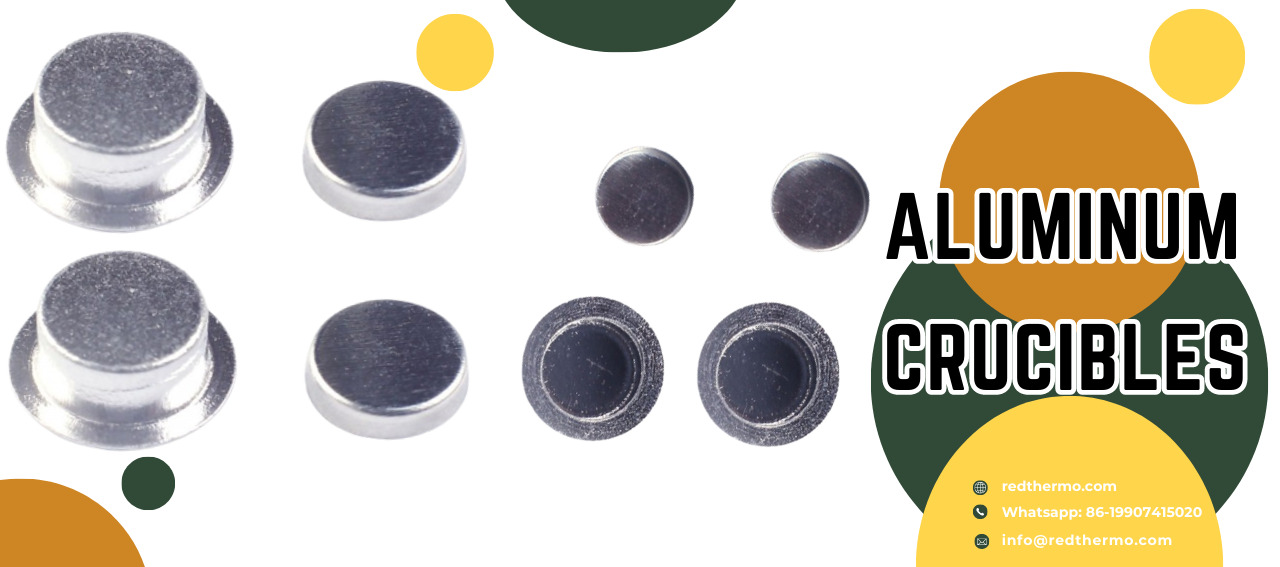Your cart is empty.
shop now
Your cart is empty.
shop now
Before diving into the specifics, let's briefly understand how DSC works. In DSC, a sample and a reference material are subjected to identical heating or cooling conditions. The heat flow required to maintain the temperature difference between the sample and the reference material is measured. This provides information about phase transitions, thermal properties, and reactions occurring within the sample.
Crucibles are essential components of the DSC setup. They hold the sample and reference materials during the measurement process. The crucibles should be thermally conductive and exhibit minimal reactivity with the sample to ensure accurate heat flow measurements. Aluminum crucibles are commonly used due to their favorable thermal properties and cost-effectiveness.

While aluminum crucibles are widely used, they can introduce certain effects that may affect the accuracy of DSC measurements.
Aluminum has high thermal conductivity, which means it can rapidly transfer heat. This property can result in faster heat transfer between the sample and the crucible, potentially altering the observed thermal events or shifting their positions in the recorded DSC curves.
Aluminum is prone to oxidation when exposed to air or certain environments. Oxidation can generate additional heat, leading to erroneous signals during DSC measurements. It is crucial to minimize the exposure of aluminum crucibles to oxygen and moisture.
Aluminum crucibles may contain impurities or residual traces of substances that could contaminate the sample. These contaminants can influence the thermal behavior of the sample, leading to inaccurate results.
Some samples may chemically react with aluminum, leading to changes in their thermal behavior. These interactions can obscure or modify the desired signals, making it challenging to interpret the DSC data accurately.

Several strategies can be employed to minimize the potential effects of aluminum crucibles on DSC measurements.
Choosing crucibles made of materials with lower thermal conductivity, such as stainless steel or ceramic, can help reduce heat transfer effects and maintain the accuracy of DSC measurements.
Thoroughly cleaning and drying the crucibles before use can help minimize contamination and reduce the risk of introducing unwanted factors into the DSC measurements.
Regular calibration of the DSC instrument and proper baseline correction techniques can compensate for any background signals introduced by the crucibles, ensuring more accurate measurement results.
Including appropriate control experiments, such as empty crucibles or reference materials with known thermal properties, can help distinguish the effects caused by the crucibles from the actual sample behavior.
The choice of crucible material should be carefully considered to ensure reliable and reproducible DSC measurements. Researchers should evaluate the specific requirements of their experiments and select the crucible material accordingly.
Aluminum crucibles can have potential effects on DSC measurements due to their thermal conductivity, susceptibility to oxidation, contamination risks, and interactions with the sample. However, these effects can be minimized by implementing suitable mitigation strategies, such as using alternative crucible materials, proper sample preparation, calibration, and experimental controls. Researchers must consider these considerations to obtain accurate and meaningful data from their DSC experiments.
While aluminum crucibles are commonly used, they can introduce certain effects on the results of DSC measurements. It is recommended to consider the potential drawbacks and explore alternative crucible materials depending on the specific requirements of your experiment.
Oxidation of aluminum crucibles can generate additional heat, leading to erroneous signals in DSC measurements. It is crucial to minimize oxidation by reducing exposure to oxygen and moisture.
Stainless steel and ceramic are popular alternatives to aluminum crucibles due to their lower thermal conductivity and reduced reactivity with samples.
Proper sample preparation, including thorough cleaning and drying of crucibles, helps minimize contamination and ensures accurate and reliable DSC measurements.
Calibration and baseline correction techniques are essential to compensate for background signals introduced by the crucibles and achieve accurate measurement results in DSC experiments.